India: Good Endings, Good Beginnings!
Within an industry that traditionally moves at a slow pace, the rapidly changing playing field as required both Indian pharmaceutical companies, as well as MNCs, to adjust their strategies accordingly
'Paradigm shift:' the two words that best describe what the Indian pharmaceutical industry has experienced in the last 40-plus years. Numerous developments have drastically altered the healthcare and pharmaceutical environment in the world's seventh-largest and second-most populous country. Within an industry that traditionally moves at a slow pace, the rapidly changing playing field has required both Indian pharmaceutical companies, as well as multinational corporations (MNCs), to adjust their strategies accordingly. Provided that India's $12 billion market will keep growing at the same rate, its total domestic market size is set to reach between $49 billion and $74 billion by 2020, according to a recent PricewaterhouseCoopers (PwC) estimate. With a consistently higher growth rate than most other countries, India is expected to soon earn a place in the world's top 10 largest pharma markets.

(PHOTO CREDIT: KOEN LIEKENS)
While the country's astounding GDP growth has recently enabled Finance Minister Pranab Mukherjee to lay out an increase of 20% in health allocations in 2011-2012, India's public expenditure on healthcare as a proportion of GDP still stands at a worrying low of around 1%. Policymakers are aware of the issue, but a country the size of India has many challenges to tackle. How, then, to step away from a model where 80% of health expenditures are out-of-pocket payments? "The role of the insurance providers is obviously the answer to many issues India faces today," says Sujay Shetty, pharma and life sciences leader at PwC India. "This is the single most important thing that should happen in India, and is bound to lift up the broader markets, as well as certain specialist therapies which would otherwise be unaffordable."

India GDP Growth rate % (PPP)
Government has already taken a number of measures to ensure affordable medicine in the country, and 74 drugs and formulations have been under price control by the National Pharmaceutical Pricing Authority since 1995. These downward price pressures explain the high penetration of bioequivalent versions of innovator drugs (branded generics occupy roughly 90% of the market according to industry experts), as well as the fact that a market massive in volume has remained low in value. Whether differential pricing is the solution to enhance uptake depends to a great extent on the therapeutic portfolio and strategic course companies embark upon.
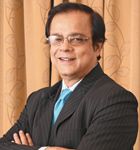
Tapan Ray, Director General of OPPI
A 1970 law that recognized patents on processes, rather than products, meant the start of a booming domestic generic industry in India. However, having joined the World Trade Organization (WTO) in 1995, Indian policymakers were obliged to harmonize local legislation with the global-standard Trade Related Intellectual Property Rights (TRIPS) agreement, resulting in the adoption of product patent law from 2005 onwards. "The previous paradigm was one of replication, where Indian manufacturers were replicating and marketing products at a fraction of their international price," recalls Tapan Ray, director general of the Organization of Pharmaceutical Producers of India (OPPI), India's premier association of the largest research-based international pharmaceutical companies in India. While it has been a practice that gave India a pool of some of the most brilliant process chemists in the world, Ray believes that further progress within the country's economy and pharma industry will be driven, to a large degree, by innovation.
DECADES OF PATENT POWERPLAY TO BOOST AFFORDABLE MEDICINE
India's 2005 change in patent regime became a true paradigm shift: flagship generic companies such as Cipla, Ranbaxy Laboratories, Zydus Cadila, Lupin, and Dr. Reddy's Laboratories had emerged on one side of the spectrum, while an increasing presence of MNCs in India's domestic market space concurrently took place on the other side. For the latter, the strategies to tackle the very fragmented, competitive, and price-sensitive Indian market varied significantly. Japanese innovator Astellas, for example, has been one of the youngest entrants, having set up offices in India only in 2009. Its managing director, Teruo Yasufuku, points to the robust 2005 patent law in justifying a full presence. "India's growing economy, the lifestyle changes, and the affordable income increase, are also some of the factors we used in our evaluation to decide whether it would be really viable or feasible to set up an Astellas subsidiary in India," he says. To establish its presence in India, Astellas chose its flagship product Prograf, a cornerstone immunosuppressant to prevent organ rejection in transplant recipients. "We launched Prograf at the end of March 2010, at a time when 19 generic versions were available. Yet, after one year of sales, we can say that Prograf is already the second-most-prescribed immunosuppressant for new patients," says Yasufuku.
Ascribing the success to the know-how, the global network, and over 20 years of product experience in nearly 100 countries, Yasufuku and the Prograf story give high hopes to innovators that may have held back to compete in the backyard of the world's largest generic labs. Those that took the courageous leap may—by now—have realized that there are two markets in India, and a range of branded generics actually complements an innovator portfolio. "Launching quality branded products at a very competitive price is what makes the difference at Pfizer," says Kewal Handa, managing director of the Indian subsidiary of the world's No. 1 pharma major.
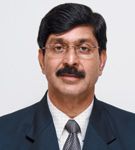
Kewal Handa, Managing Director of Pfizer
The decision of a number of prominent Indian generics players to sell their portfolios to MNCs has sparked various sentiments in the corridors of the Indian pharma scene. Recent eye-openers, such as the 2008 acquisition of Ranbaxy by Daiichi Sankyo and Abbot's 2010 deal to take over Piramal's domestic branded formulations business, certainly reveal what has been boiling beneath: a drastic change in India's pharmaceutical terrain.
"Now, what are Indian companies doing?" asks Dilip Shah, secretary general of the Indian Pharmaceutical Alliance (IPA), representing the interests of the country's leading domestic pharmaceutical companies. Shah continues, "One, they are building marketing infrastructure, and selectively getting into various countries where they can compete independently. At the same time, Indian companies are looking to capitalize on Big Pharma's push to enter emerging markets via generics. Other things that Indian companies are doing include looking at African markets to establish local production and reinforcing their presence in mature markets. For the mature markets, some Indians are growing via acquisition."

D.G. Shah, Secretary General of IPA
Satish Reddy, managing director and chief operating officer of Dr. Reddy's Laboratories, confirms that some of the company's key growth drivers in 2010 came from international markets, and comments that "at the top of the list are the USA, India, Russia, and Germany, followed by countries such as Venezuela." Other flagship Indian generics players, such as Cipla, Zydus Cadila, and Lupin, have similarly been increasing their international footprint. "You need to remain aware of the fact that India still only captures 1.5% to 2% of the world's pharmaceutical markets. With 98% of the market share outside of India, you have to ask yourself how to grow, and how to grow rapidly. In that pursuit, you have to prepare yourself to partake in advanced geographies, where you can be part of a larger pie," comments Lupin's managing director Kamal Sharma.
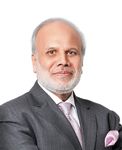
Kamal K. Sharma, Managing Director of Lupin
TOGETHER WE PREVAIL
To sustain and grow market share in India's challenging environment, having a compelling value proposition may be sufficient. Today, such a proposition will inevitably have to take into account the shifting disease profiles of the Indian population. Sandeep Gupta, managing director of Eli Lilly India, explains, "Not too long ago, the focus used to be primarily on battling acute illnesses. And while this still remains a major burden, what we are now seeing is that chronic or lifestyle diseases such as diabetes and cardiovascular disease (so far considered to be the domain of the Western world) have become more rampant here." Statistics from the World Health Organization (WHO) indeed point to an estimated 50.8 million patients, making India home to the world's largest diabetes population. "This shift towards chronic or lifestyle diseases," Gupta continues, "has led to an ever-increasing number of tie-ups between large Indian and Big Pharma companies across the value chain, from the early stage research to demand realization or commercialization." Elaborating on Lilly's business strategy, Gupta remarks, "Until a few years ago, Lilly used to actively pursue the Fully Integrated Pharmaceutical Company (FIPCO) strategy. That was a time when everything used to be done in-house. We have gradually moved to a more efficient strategy called Fully Integrated Pharmaceutical Network (FIPNET), a system of interconnected partnerships with external organizations, giving Lilly the ability to execute projects by the right people, at the right cost, in the right time. This way, we are able to access the assets, resources, and expertise that help to manage costs and increase the flow and value of products with the overall objective of improving patient outcomes."

Sandeep Gupta, MD, Chairman of Eli Lilly
Companies active in the chronic disease segment will agree that delivering value requires a persistent and sustained presence in the Indian market. Melvin Oscar D'souza, India's managing director of Denmark-based leading global diabetes care company Novo Nordisk, elaborates on how the company has traditionally entered markets very early. "In a chronic therapy segment like diabetes, you need to create sustainable value for your end users," D'souza says. "Early market entry and working with sustainable plans that genuinely serve the patients have helped build our franchise." With diabetes II-related expenses now amounting to 2.1% of the annual healthcare budget, according to Bloomberg, India's center and state governments have come to realize the importance of tackling the pandemic early. In cooperation with the private sector, various initiatives to facilitate early detection and prevention, including education, have been put in place. The Novo Nordisk Education Foundation, for example, has been in place since 1997. The early-mover advantage goes hand in hand with the continuous launch of Novo Nordisk's most innovative and revolutionary products. To illustrate, Victoza (liraglutide) has such a strong product profile that it managed to capture 80% market share in the GLP-1 segment in the first six months after its launch in June 2010. "If we are truly talking about changing diabetes, I see Victoza as another step on that route. Victoza allows us to reach patients early in the treatment cascade and help to effectively control the disorders," D'souza explains.
Chairman and managing director Krishna Ella runs his Bharat Biotech from India's first biopharmaceutical cluster across Hyderabad, City of Pearls, the sixth-most-populous city in the country. As a first-generation entrepreneur, Ella hopes that clusters such as Genome Valley can change the current state of Indian biotech. "We need more avenues in the country to support an ecosystem, opposite of the biosimilar model. Government policy is one thing, but you also need visionary entrepreneurs to create an innovative spirit of competition," he says. Some societies have people that run faster than their rules and laws can keep up, and India, with its indigenous entrepreneurs, falls into this category. In Bangalore, 350 miles south of Hyderabad, self-made entrepreneur Kiran Mazumdar-Shaw has shown that the biosimilar model has indeed been an interesting area to be in. From a garage in 1978, she has grown Biocon into a global biopharmaceutical company of approximately $500 million, and has personally been included in Time's Top 100 Most Influential People in the World. "The entrepreneurial spirit of India is what built this company," she says.

Kiran Mazumdar-Shaw, MD, Chairman of Biocon
Kunchithapatham Shivkumar, director the pharmaceutical division of German-based Merck KGaA in India, has high expectations for biosimilars. "An example is our flagship product, Gonal-f, a recombinant follicle-stimulating hormone for fertility, for which there exist four to five biosimilar versions developed by companies such as Reliance and Lupin," he says. "These are companies that have even succeeded at reverse engineering in a complex area such as biotechnology. I therefore see no reason why MNCs cannot partner with them to source products in India, and possibly take them to other markets too. This is one particular area that has become extremely important for the Merck Group."
While one may in the first place expect India's entrepreneurs to battle for market share with national counterparts, Claris Lifesciences shows that targeting the right niche may well limit local competition. The company's visionary entrepreneur, managing director, and CEO Arjun Handa, ascribes the company's success to two factors: "On the one hand, we have had a first-mover advantage in product development, and on the other hand, we have managed to scale up our products significantly." Now competing with the world's largest international players such as Baxter and Hospira, Handa has successfully managed to take his high-quality, low-cost injectables to 76 countries.

Ajit Kamath, MD, Chairman of Arch Pharmalabs
The abundant presence of entrepreneurial spirit and family businesses in India has also resulted in an adverse attitude towards the dilution of equity, making the latter more the exception than the rule. Ajit Kamath describes what he did differently with Mumbai-headquartered Arch Pharmalabs, where he is chairman and managing director. In 1999, together with his associates, Kamath put all his savings into taking over a company in Hyderabad that had filed for bankruptcy. "We formally became owners in 2003 and this is when we got in touch with private equity," Kamath notes. For Arch Pharmalabs, it was the private equity that underpinned the turnaround and nourished the growth from $2 million to $300 million in turnover, in just over a decade. "At some point, we had diluted nearly 60% of the shares to private equity," Kamath says. The strategy was very clear. "We decided to focus on a few products, engage in backwards integration, and bring on the necessary technology. In 2005, when we were not as big as today, we invested a lot in an R&D center with 250 scientists. Then we got into alliances; a lot of people wondered how Arch, as such a small company, could get into these alliances. Once again, the dilution of equity played a major role, because it enabled us not only to acquire companies, but also to acquire technology. We now have three facilities FDA-approved, and we are expecting to have two more by the end of the year. In a next step, he envisions to evolve from an API/intermediate company to a complete healthcare company in the future.
UR-BEYOND: THE RURAL REACH
With three of India's cities—Mumbai, Delhi, and Kolkata—ranking among the top 21 mega cities on the planet, the World Bank sees India's urbanization process as an integral part of its economic growth story. Yet, a 2011 report by that same institution also indicates that roughly two thirds of the Indian population still reside in rural areas, of which 80% live below the median developing-country poverty line of approximately $2 per day (Rs 22). And while most pharma companies have not been successful at penetrating the rural areas, Swiss drug maker Novartis has excelled with its award-winning rural access business model, Arogya Parivar. Vice chairman and managing director of the Indian operations, Ranjit Shahani, stresses that the initiative has given 50 million people access to medicines. "We now operate in 11 states, and are very actively making sure that products are available, accessible, affordable, and that people are aware of them. These are our four 'As of Arogya Parivar," Shahani says.

Ranjit Shahani, Managing Director of Novartis and President of OPPI
Other players have slowly been launching pilots to go "ur-beyond." US-based MSD, for example, has forayed into innovative product development to overcome cold-chain distribution problems, by setting up a local joint-venture for vaccine research together with the Wellcome Foundation. K.G. Ananthakrishnan, managing director, explains, "One of the first projects that is going to be taken up by these laboratories is indeed the development of a heat-stable rotavirus vaccine." If successful, this will be another breakthrough for vaccine development for developing countries, where infrastructure and distribution channels often pose significant challenges.

Safia Rizvi, Managing Director of UCB
For a country that desperately needs to pull its lowest income classes into a more humane existence, India is a country where Corporate Social Responsibility programs are really put to the test. Such programs obviously exist in all different shapes and colors, but are likely to be most relevant where they can capitalize on a company's core competencies and respective therapeutic areas. This is of particular importance in India, where many diseases still carry a certain social stigma. Epilepsy, for example, is perceived rather differently than in other nations. "There is a lot of work that remains to be done to destigmatize epilepsy in India and have it treated for what it is—an illness. Public awareness and education is as crucial as the availability of the best drugs," explains Safia Rizvi, India's managing director of the Belgian CNS-focused company UCB. All the more reason that Rizvi is not only proud of bringing UCB's products to her country of origin, but even more so of concurrently implementing India-tailored CSR programs. "We therefore have a large educational effort as part of our outreach programs. There are a lot of companies that have been making a significant effort to implement meaningful initiatives."
MADE IN INDIA
"Our industry is starting to understand that if you want to grow, you need to shift from vanilla generics to value-added generics," says Daara Patel, secretary general of the Indian Drug Manufacturers' Association. "Outside of the US, India already has the largest amount of companies filing DMFs and ANDAs, as well as the largest amount of US FDA-approved plants (90), not to mention more than 200 plants approved by the WHO. So yes, we are doing well: if you look at numbers, the entire sector has grown to become a $20 billion-plus industry, of which almost 40% to 45% is exports. And thanks to our infrastructure, we have the capacity to grow more."
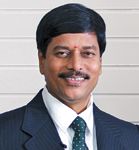
B.P.S. Reddy, MD, Chairman of Hetero
One Indian manufacturer that has obtained a great level of respect from the industry, and has invested roughly $500 million in infrastructure in the last three years alone, is Hetero Group of Companies. Dr. B.P.S. Reddy, chairman and managing director, shares his view on how he became one of the largest HIV drug manufacturers in the world. "Hetero is a vertically integrated company that started from API manufacturing. A first path we have taken is the one of backward integration, in order to better compete with Chinese players. Hetero has also started complete Greenfield projects to supply the North American market. After an upgrade in 2005, we have now submitted roughly 50 ANDAs from this facility," Reddy says. Apart from the world-class infrastructure, Reddy's previous position as chief technologist at Dr. Reddy's Laboratories underpinned his strategy to maintain a strong focus on R&D. The leadership in HIV aside, Hetero's other achievements include a licensing deal with Roche in 2005, making it one of the first companies to make a reliable generic version of Tamiflu, later also deployed for swine flu. "It was a very important milestone. Roughly 60 countries, especially underdeveloped and developing ones, were addressed as per our agreement. I felt that MNCs had come to realize that Indian companies will be able to meet their expectations. This does not only apply to Hetero, but contributed to the credibility of Indian pharma as a whole," he says.
Indian pharma is largely indebted to the excellent manufacturing experience the country has accumulated. "GSK did a study a few years ago, that showed that plants with identical machinery, and identical capability, set up in India, and set up in Europe, will have a 40% difference in cost," says Dilip Shah of the IPA. India-headquartered Micro Labs, for example, has grown into a company with a presence across the entire value chain—from R&D, APIs, and finished formulations, to marketing and distribution in India and overseas. A series of ongoing investments and expansion efforts have pulled the company into the top 20 of the Indian Pharmaceutical Retail Industry. "Last year there was an expansion of the company's manufacturing assets in India. Most notably, Micro Labs established a state-of-the-art API unit. In terms of research and development, the company created two facilities, one in Bombay and the other in Bangalore," says Dilip Surana, Micro Labs' managing director.

Dilip Surana, Managing Director of Microlabs
"The purpose of establishing the API unit was to become a fully integrated pharma company, which is useful especially when entering highly regulated markets. The rationale was both to guarantee supplies and bring down costs. API standards for regulated markets are very stringent and therefore costs are higher," Surana continues. "In some cases, the APIs produced in India are above the standards of regulated APIs in terms of both quality and purity. However, they cannot be sold without the required documentation. Therefore, having its own API unit allows Micro Labs to guarantee supply of regulated APIs and focus on regulated markets."
Now focused on selling generic drugs through partnerships in regulated markets such as Europe and the US, Surana estimates that the company's export revenues will soon exceed those generated within India. "I was never worried about the 'Made in India' label," says Jeffrey Morrod, India's managing director of US-based Watson Pharmaceuticals. Morrod has nothing but praise for the strong R&D and manufacturing set-up Watson now has in India, and is proud to have acquired formulations and API plants from key players such as Dr. Reddy's. "Coming to India was not daunting; on the contrary, it was a fantastic opportunity," he adds.
While top foreign vaccine manufacturers such as GSK and Sanofi may be present in India, the vaccines industry still remains primarily dominated by Indian players. Of the global requirements of basic vaccines procured by U.N. agencies for children, Biotechnology Industry Organization (BIO) estimates that 60% to 70% is being catered by the Indian vaccine industry. "In terms of coverage per number of children, India surpasses everyone, with figures as high as 60 to 70 million children being reached through UNICEF alone, every year among the newly born," says Dr. Rajesh Jain, joint managing director of Panacea Biotec, one of India's leading vaccine players that has just passed the $220 million (approximately Rs. 1,000 crore) turnover milestone in February 2011.

Rajesh Jain, Managing Director of Panacea Biotec Limited
Capitalizing on their cost-effectiveness, manufacturing expertise, and the rising global demand for affordable vaccines, Indian vaccine manufacturers have become crucial partners in several global initiatives. For Panacea Biotec, the breakthrough was its agreement with the government of India in March 2010 to manufacture H1N1 flu vaccine Pandyflu. "In my 20 years of experience," Jain recalls, "I experienced this moment as a renaissance for the entire Indian vaccines industry." For Jain, it started a new chapter and a reference base to engage in further government initiatives. "Succeeding in vaccines is finding the way to strike the balance between the nature of the industry, the need for capital, the ROI time, the right product mix, and an attractive price to eventually ensure product procurement by the government. A company that manages to fit all these pieces in one puzzle will make a great company in the developing world," Jain explains. Home to many local success stories, including top names such as the Serum Institute of India, Shantha Biotech (now part of Sanofi-Aventis) and Bharat Biotech, the vaccines niche makes up the lion's share (55%) of the Indian biopharma segment, according to the Association of Biotechnology Led Enterprises (ABLE).
NEVER TOO LATE TO INNOVATE
In many ways, India is a country of contrast: the wealth distribution gap, differences between the north and the south, multinationals versus locals—the list goes on. It is not surprising that discussing innovation with India's top industry professionals leads to contrasting views. According to OPPI's Tapan Ray, Indian companies mainly started investing in discovery and research since 2005. "Now there are at least 10 Indian companies engaged in basic research, while 32 NCEs are in early stages of development. It is a very small step the country has taken, but this could not have been possible without a conscious decision to move from replication to innovation," Ray says. On the other hand, Rajeev Nannapaneni, chief operating officer of local generic player Natco Pharma, explains why the former model should not necessarily be abolished already: "If it was not for India, I do not think there would be affordable generics in the world," he says. "Indian companies play a role as finished dosage or chemical suppliers internationally, and have contributed significantly, either directly or indirectly, to a reduction of healthcare expenditure worldwide. I am a defendant of the fact that innovation needs to be rewarded, but we do also need to take into account the economic situation of countries like India, where we need to address certain peculiarities that are inherent to the country. Going forward, the biggest challenge will remain the public policy challenge. We need to find ways to reward innovation, while at the same time take care of the needs of the general public. Both the MNCs as well as local Indian players need to address this challenge together."

Global Research and Development (GRAND) Centre, Mumbai, Panacea Biotec
India's move up the innovation ladder has, to a lesser extent than in China, also driven MNCs to use the country to ramp up global R&D by outsourcing core functions such as drug discovery, new product development, formulation, and preclinical trial management. As a result, the Indian contract research industry has been growing tremendously at a CAGR of 65% from 2007 to 2010, exceeding the $1.5 billion mark last year. SIRO Clinpharm, the second-largest contract research organization (CRO) in India, went one step farther. Positioning itself as an emerging markets specialist, SIRO successfully completed an acquisition spree in Western Europe, where it plays out its twin advantage of low cost and speedy patient recruitment. Commenting on whether India has the potential to evolve into a hub for clinical trials, GSK India's managing director and vice president GSK South Asia, Dr. Hasit Joshipura, sees it as "inevitable that India will evolve towards this status. For our company, the country already serves as a hub in that sense."

Hasit Joshipura, Managing Director and VP of GSK
While India may have evolved beyond an attractive outsourcing destination, the importance of the outsourcing trend still reflects in today's statistics. The 2010 global top 100 of outsourcing companies is stacked with Indian success stories, with IT giants Infosys Technologies, Wipro Technologies, and Tata Consultancy Services in the second, fourth, and seventh positions respectively. "IT capabilities and the ability to process and make sense of data via analytics are both crucial in modern clinical trials. If you look at the composition of Quintiles' revenue, approximately 30% comes from clinical trials, while 70% comes from data-related services, processing biomarkers, etc. These peri-clinical services are a unique strength of India, which is something that not many people know," says Anil Raghavan, India's country head of the US-headquartered global CRO. "Outside of the US, this is one of the only places where we have a full service offering. This is as robust as it gets in the CRO space—and we will continue to expand in India," concludes Raghavan. "Data management," for example, "is seen as a well-respected career path in India. There is a vast, trained, English-speaking resource pool with a strong understanding of the discipline," says Baljit Samra, the local Indian managing director of the other renowned US-based global CRO, Parexel. "Leveraging our global resources and worldwide technology infrastructure, we can enable more effective information flow and improve data access, which results in greater visibility into trials—and ultimately in better decision making," Samra explains.

Insulin Plant at Biocon
Other MNCs have conversely decided to retain or build a direct presence in R&D in India. "The initial interest was sparked by the immense expertise India has in chemistry research and chemistry-driven areas," recounts Sham Nikam, Nycomed's head of global discovery and chief scientific officer of the company's Indian subsidiary. While India's expertise in the chemistry field has certainly benefitted the nation, the very same expert chemists have been insufficiently exposed to the entire R&D process, which has limited the extent of innovative discovery work in India. This is in addition to the fact that the high growth rate of the Indian economy has resulted in dramatic attrition rates for its pharmaceutical industry. The 2005 patent law moved India one step closer to its first new chemical entity (NCE), but it is still too early to tell how far the innovative work of locals such as Biocon and Glenmark will go. "A study by the IPA noted that in 1995, the industry spent just $31 million on R&D work. By 2006, that figure had reached $529 million, and has continued to grow since then. Our largest players routinely invest 10% to 12% of their turnover into R&D," Dilip Shah of the IPA notes. Glen Saldanha, Glenmark's chief executive officer and managing director, remains cautious of speculatation, arguing that the pocket of Indian companies may not be deep enough to take a drug all the way to the market. "This is why partnering becomes an extremely important, and essential, piece of the innovative strategy for most Indian companies. It will take some time before you see true innovation start to come out of India," he says.

Glenn Saldanha, MD, CEO of Glenmark
Yet, innovation can still remain a broader objective that can be achieved in many different ways. Dutch player DSM sets the example, establishing its first innovation centre outside the Netherlands in Delhi by late 2011. Rajiv Chopra, local president, clarifies the difference with R&D. "Globally, at the innovation center, we incubate business models," Chopra says. "From one perspective, these centers enable us to see what we can bring to India from the global basket. A second perspective stems from a technology point of view, where we are looking at open innovation. This relates to the local partnerships we are aiming to build up in India, with local R&D organizations, R&D groups within companies, and so on. The third strategic implication of the innovation center will be to investigate what unique business models we can create in India. This is a way for DSM to export innovation from India, and identify what India can bring to the world. While India has been widely recognized as the center of frugal innovation, it has been moving up the innovation ladder, and we expect to tap into this potential for high-end innovation," Chopra says.

Rajiv Chopra, President of DSM India
What probably best explains the contrasts in the Indian pharmaceutical landscape is the fact that India can take many shapes and forms, and that different companies in India will keep pursuing different strategies. On a final note, Glenmark's Saldanha says that "there are some who will continue to focus on manufacturing; some who will identify themselves as contract-research outfits; some who will say they want to be global, product-driven companies; some who will say they want to be generic companies; some who will say they want to be API suppliers to the world; and some who want to be truly novel and innovative." Whichever strategy is chosen, embracing innovation in the broader sense will remain instrumental in achieving the crucial degree of differentiation in India's highly fragmented pharmaceutical landscape. Companies that will manage to combine differentiation with strong local and international partnerships can be sure to enjoy the significant growth perspectives of Indian pharma, and secure a strong foothold in this future top 10 market.
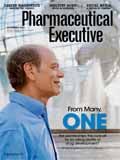

.png&w=3840&q=75)

.png&w=3840&q=75)



.png&w=3840&q=75)



.png&w=3840&q=75)














